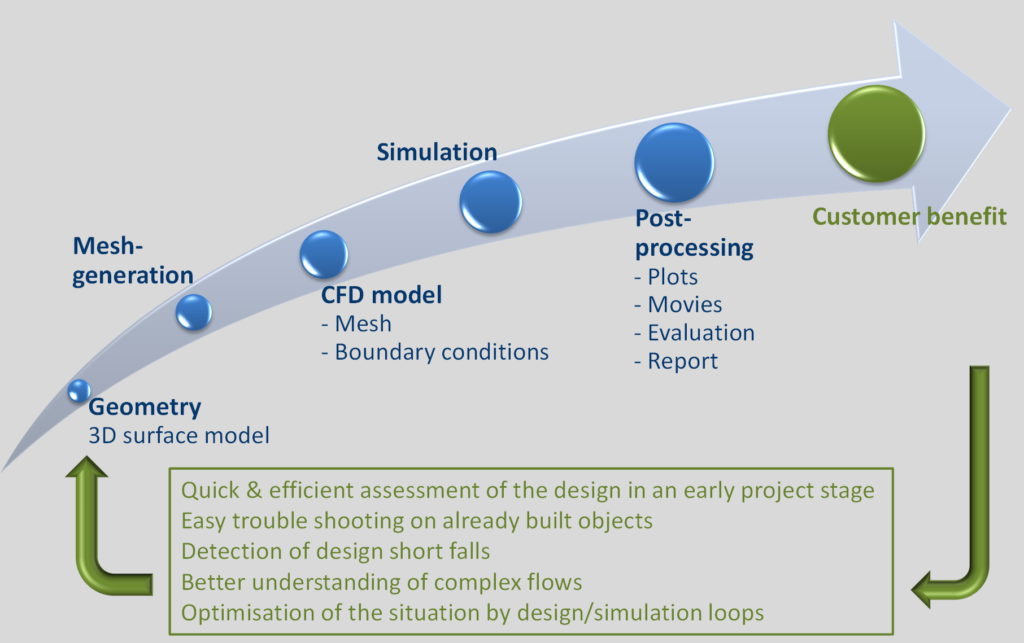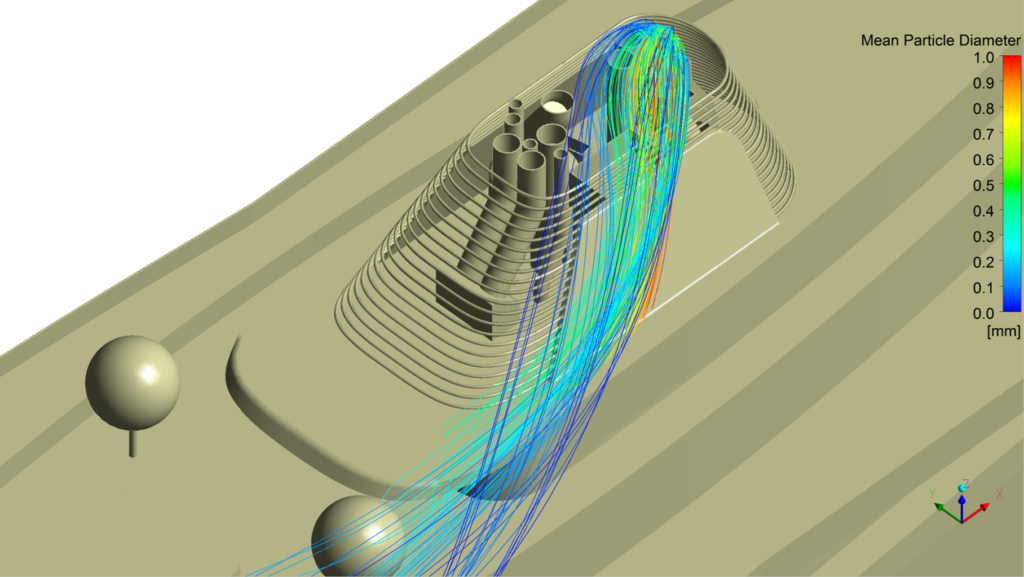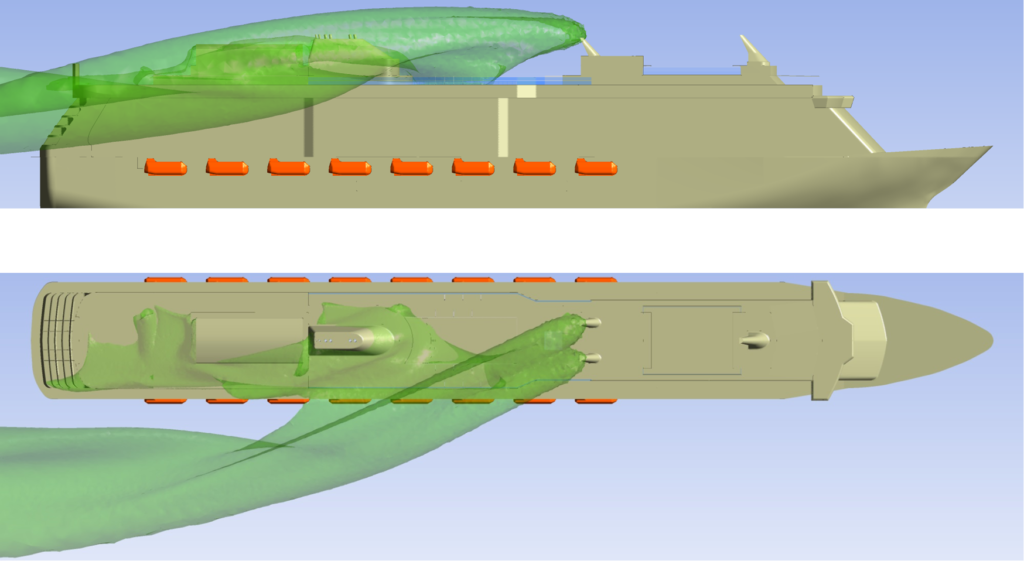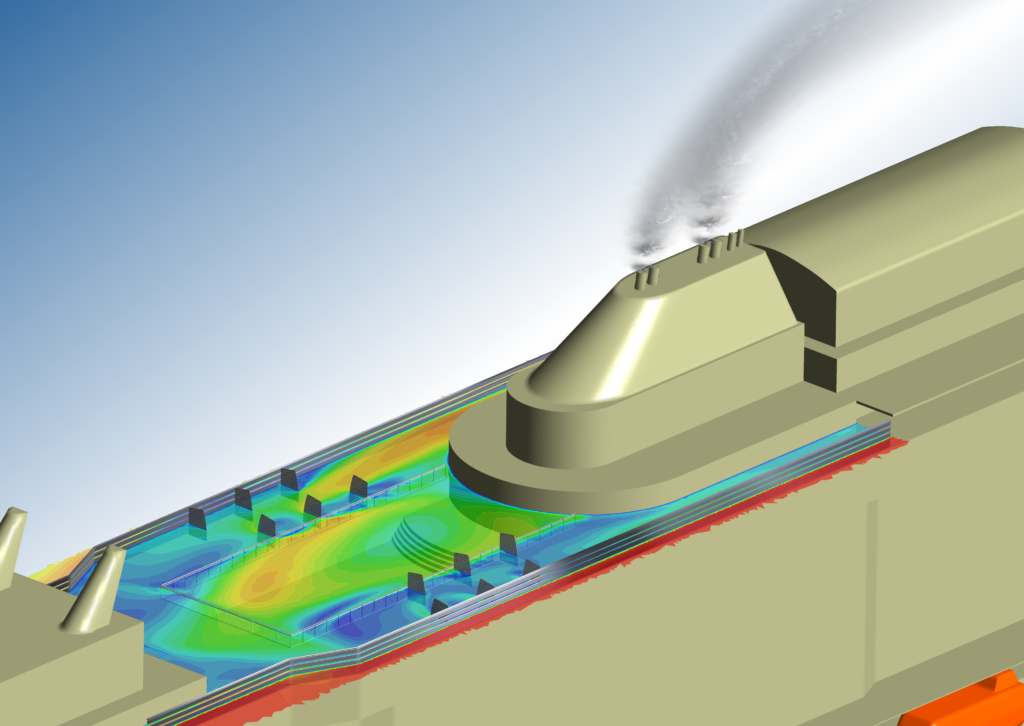Already since the mid-nineties we have successfully applied modern numerical flow calculation methods (CFD) to maritime aerodynamic tasks. Our numerical simulations deliver accurate flow field predictions and visualisations for a full scale object of investigation without any scaling procedure.
Testing a real scale model of a maritime structure like a vessel or an offshore unit in a “numerical wind tunnel” at a very early stage of the design process is an appropriate tool to explore potential risks concerning the performance, e.g. the smoke dispersion or the wind conditions on open decks.

We perform aerodynamic studies of maritime structures providing the following services
- Wind comfort studies for open decks
- Optimisation of wind screen arrangement
- Analysis of funnel and exhaust and ventilation pipe arrangement
- Smoke and odour dispersion – flow behaviour and concentration
- Wind resistance predictions
- HVAC analysis of closed or semi-open water parks
- Helicopter operations studies
The typical research for cruise ships is to review the performance of the funnel, to analyse and improve the wind comfort for the passengers on the open decks, and finally to determine the wind forces to ensure safe manoeuvring of the ship in all weather conditions.
Funnel performance
In our analysis of ship aerodynamics the layout of the funnel and the arrangement of all exhaust gas outlets will be investigated by emitting individual exhaust gases and tracking their dispersion for a given ship speed range and different wind speed / wind directions. The numerical simulations include all exhaust and ventilation pipes as machinery, galley, sewage and laundry exhaust as well as tank ventilation. As result, we can provide accurate information of flow behaviour and exhaust gas concentration.

A working design is characterized by the fact that exhaust gases do not pollute open decks or ventilation inlets. If the exhaust gas concentration values are within acceptable levels the funnel and the exhaust gas piping performance is verified. If not, our experts can support you to make the necessary changes and to find an optimal solution.

Wind comfort
Modern
cruise vessels are often equipped with large open deck areas for sun bathing, extended
swimming pool areas or spaciously laid out fun parks. Especially in these areas
the wind comfort for the passengers is highly significant. The initial design
can be investigated by using our numerical simulations to assess if the comfort
criteria have been met.
In evaluation of the accurate numerical flow field predictions we are able to clearly
visualise the wind comfort situation, to identify areas with an inadequate
comfort level and to determine an optimal windscreen arrangement.

Wind loads
Another branch of the ship aerodynamics is the forecast of the wind resistance coefficients for a given ship design. Even though the wind resistance is less important for a sailing ship, the wind load becomes a significant parameter for manoeuver conditions as well as the stability. Especially for safe harbour and mooring operations a precise knowledge of the acting wind forces is mandatory. The known wind forces are the basis for the design and dimensioning of thrusters, the propulsion system and the mooring equipment.
Numerical CFD-calculations are a very efficient tool to test and to compare different funnel designs and arrangements of windscreens.




